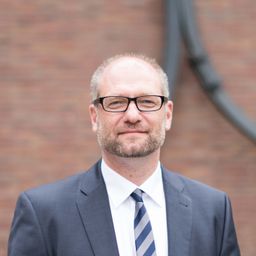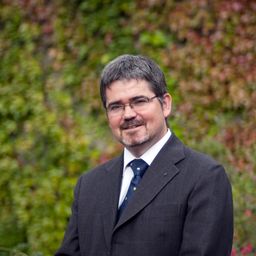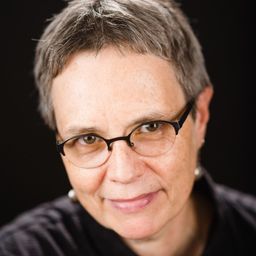
Dr. Michael Farrenkopf, M.A. (born 1966), studied history, journalism and art history at the Universities of Mainz and Berlin between 1987 and 1994, for which he was awarded a Master of Arts. Between 1995 and 1998 he was a research fellow at the Deutsches Bergbau-Museum Bochum (i.e. German Mining Museum) in Bochum (DBM), working on a comprehensive history of the cokemaking industry (published in two volumes in 2003). 1999/2000 he wrote his PhD thesis at the Technical University of Berlin on the topic “Fire Damp and Coal Dust. The explosion risk in the industrial Ruhr mining (1850-1914)”, published 2003 in German language, for which he received the Young Investigator Award of the Georg-Agricola-Gesellschaft zur Förderung der Geschichte der Naturwissenschaften und der Technik e.V. (i.e. Georg-Agricola-Society for the promotion of history of natural science and technology). Since 2001 he has worked as head of the mining history document center as well as head of the research division of mining history since industrialization at DBM. Between 2001 and 2010 he was also editor in chief of the mining history magazine DER ANSCHNITT. Since 2003 he is lecturer at the history faculty of the Ruhr-University Bochum, since 2014 also lecturer at the Institute for industrial archaeology, science and technical history at the Technical University Bergakademie Freiberg in Saxony. Since 2004 he is head of the historian commission of the Association of German coke plant specialists; from 2005 to 2009 he was speaker of the working group of archives of the Gottfried Wilhelm Leibniz Association (Leibniz-Gemeinschaft). Since 2014 he is head of the department “collections and documentation” at DBM as well as member of the steering committee of DBM.
His publications have included contributions on the subjects of economic and company history, historical accident research in mining, the cokemaking industry, and diverse archival and documentary topics.
Sessions auxquelles Michael Farrenkopf participe
Lundi 29 Août, 2022
During the Industrial Revolution coal was the most important energy source for both homes and industries. At the time, coal mining created strong regional industrial identities and mentalities, as well as industrial images and imaginaries in the eyes and minds of external observers. Such identities and ideas of coal would go on to shape industrial landscapes and communities.The papers presented in this session will investigate the social and economic changes that were triggered by t...
During the Industrial Revolution coal was the most important energy source for both homes and industries. At the time, coal mining created strong regional industrial identities and mentalities, as well as industrial images and imaginaries in the eyes and minds of external observers. Such identities and ideas of coal would go on to shape industrial landscapes and communities.The papers presented in this session will investigate the social and economic changes that were triggered by t...
During the Industrial Revolution coal was the most important energy source for both homes and industries. At the time, coal mining created strong regional industrial identities and mentalities, as well as industrial images and imaginaries in the eyes and minds of external observers. Such identities and ideas of coal would go on to shape industrial landscapes and communities.The papers presented in this session will investigate the social and economic changes that were triggered by t...
Mardi 30 Août, 2022
During the Industrial Revolution coal was the most important energy source for both homes and industries. At the time, coal mining created strong regional industrial identities and mentalities, as well as industrial images and imaginaries in the eyes and minds of external observers. Such identities and ideas of coal would go on to shape industrial landscapes and communities.The papers presented in this session investigate the s...
During the Industrial Revolution coal was the most important energy source for both homes and industries. At the time, coal mining created strong regional industrial identities and mentalities, as well as industrial images and imaginaries in the eyes and minds of external observers. Such identities and ideas of coal would go on to shape industrial landscapes and communities.The papers presented in this session investigate the s...
Sessions auxquelles Michael Farrenkopf assiste
Dimanche 28 Août, 2022
Joignez-vous aux organisateurs du congrès et aux membres du board de TICCIH pour un cocktail de bienvenue et quelques mots festifs de présentation, dans l’ancienne forge de l’École technique de Montréal, fondée en 1909, aujourd’hui intégrée au campus de l’Université du Québec à Montréal.
Mardi 30 Août, 2022
Les efforts visant à préserver le patrimoine industriel s'inscrivent dans un contexte socio-économique et politique précis. Mais qu'est-ce qui est préservé et pour qui ? Et, par ailleurs, quelle est la relation entre les sites du patrimoine industriel et les communautés ouvrières soumises à la désindustrialisation qui les jouxtent souvent ? Steven High examinera les façons dont la préservation du canal de Lachine à Montréal, le principal site du patrimoine i...
Mercredi 31 Août, 2022
In this lecture, I would like to talk about deindustrialised communities, heritage and memory in the context of right-wing populism. Drawing on studies of memory and heritage, I argue that right-wing populists have cornered the market on talking about the past of deindustrialised communities. They have successfully misrepresented this rich and complex history to fuel rage, resentment, fear and reactionary nostalgia. Indeed, ‘the past’, and in particular the industr...
Jeudi 1 Septembre, 2022
This lecture will argue that the landscapes of industrial heritage that can be found in different parts of the world are directly related to the place-specific trajectories of deindustrialization. In other words: the different ways in which deindustrialization impacts on local communities has a direct bearing on the emergence of forms of industrial heritage. I will differentialte between deindustrialization paths and related industrial heritage regimes in a) Anglo-...
Vendredi 2 Septembre, 2022
In the refusal of people in communities abandoned by industrial capital to abandon their own places, we can read an implicit critique of the mobility and unaccountability of capital, raised by those who were once inside (however tenuously or uncomfortably) and now find themselves marginalized, “left behind.” The desire to catch up again, whether through attracting new investment or transvaluing abandoned sites as tourist attractions, makes this an essentially conservative critique that is ...
Venez échanger sur les bons moments du congrès et célébrer vos découvertes scientifiques et professionnelles dans une ancienne fabrique de confiture de fruits, l’Usine C, construite en 1913 et transformée à la fin des années 1970 en lieu de création et de diffusion.Découvrez la gastronomie montréalaise grâce à un traiteur d’exception. Apprenez des bribes du patrimoine musical montréalais et de l’histoire du quartier industriel qui lui a prêté vie. Puis entendez et vivez la tradition...


